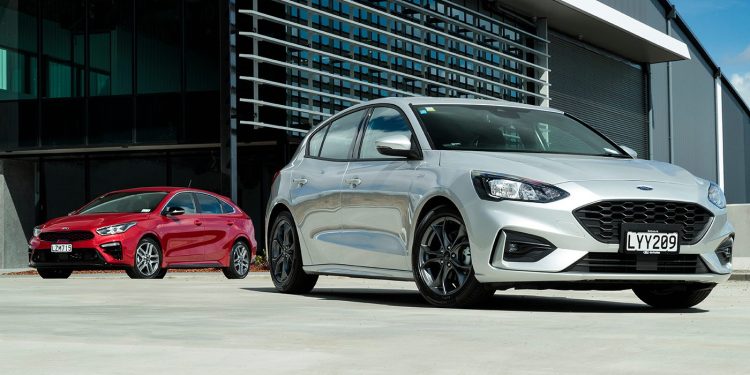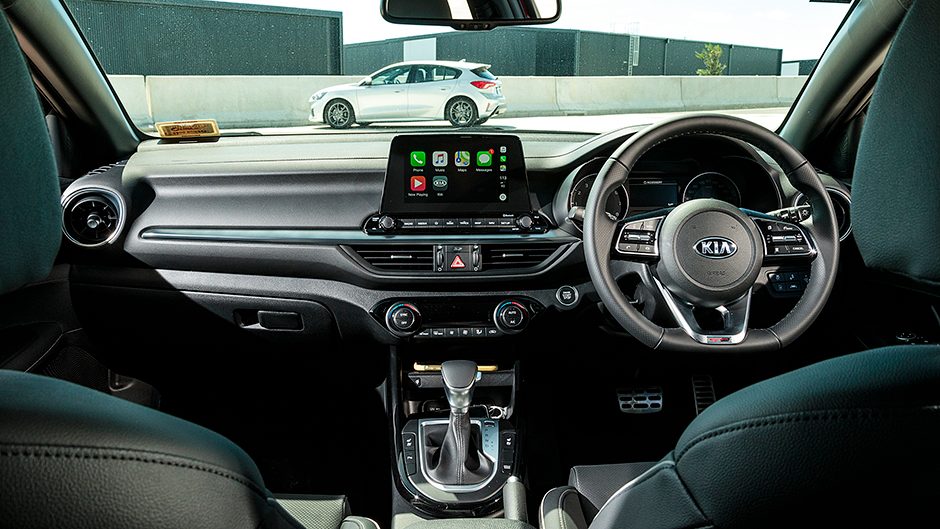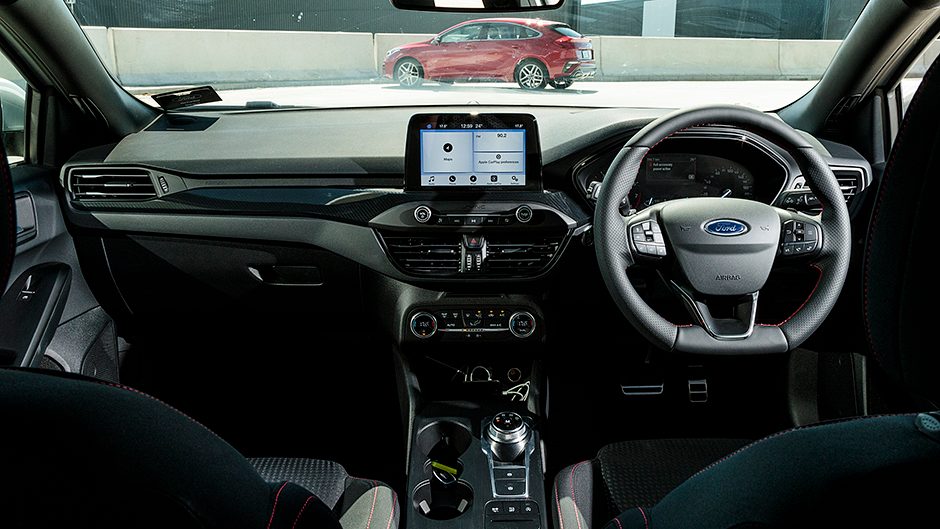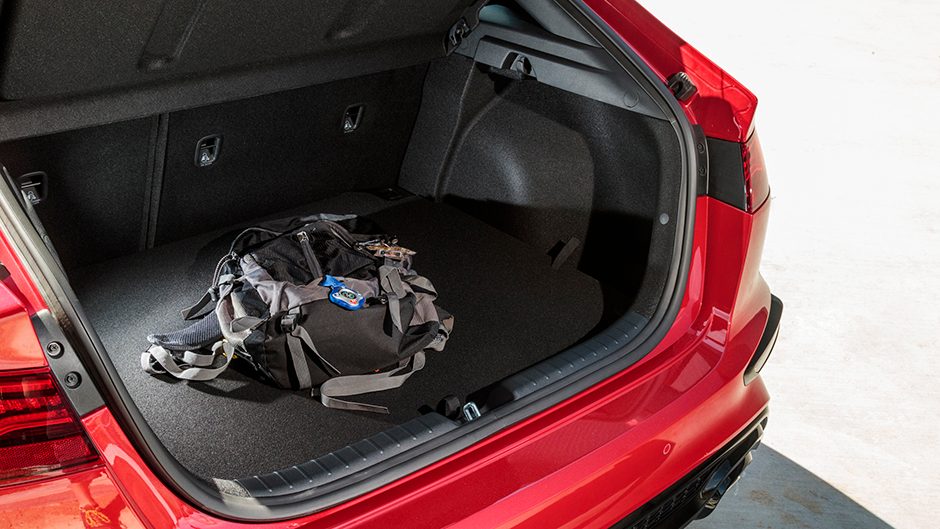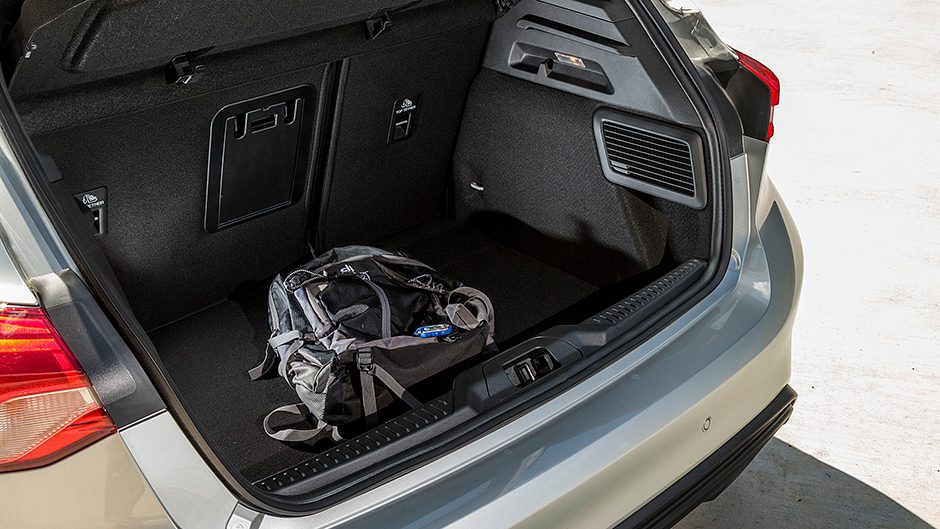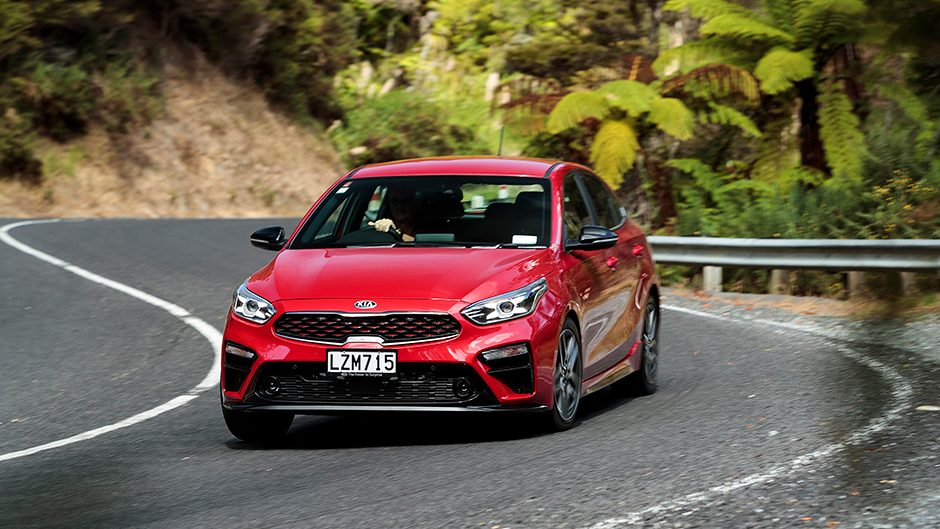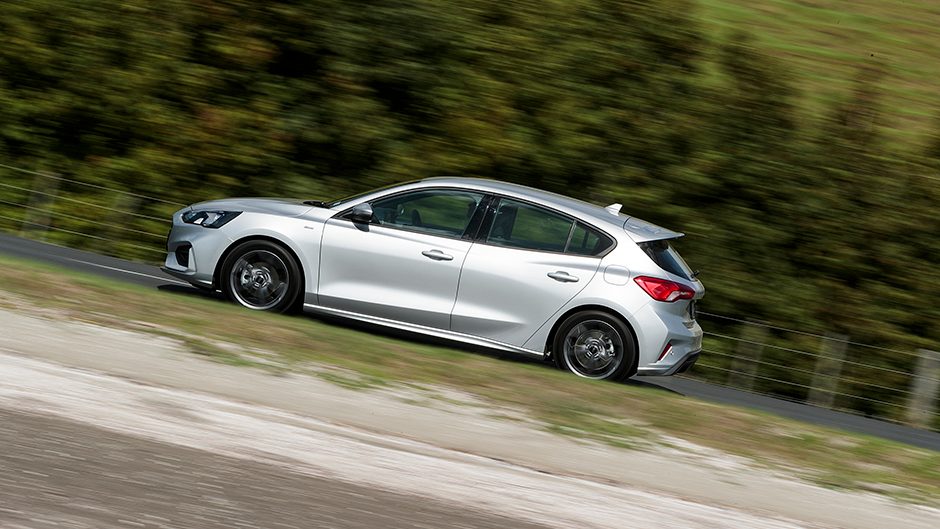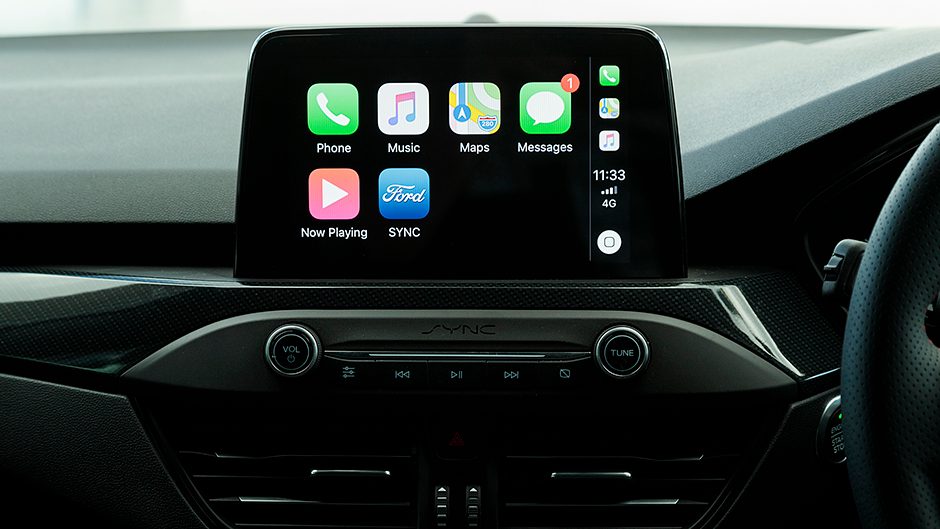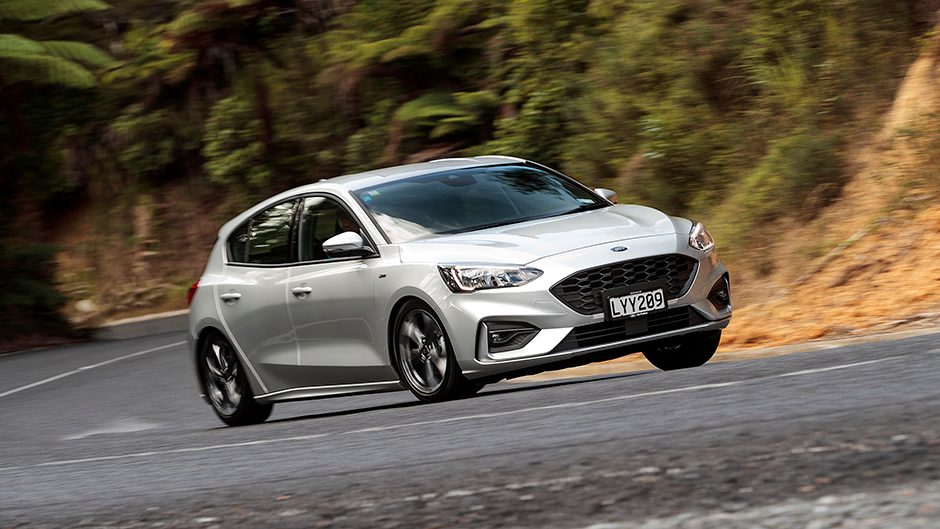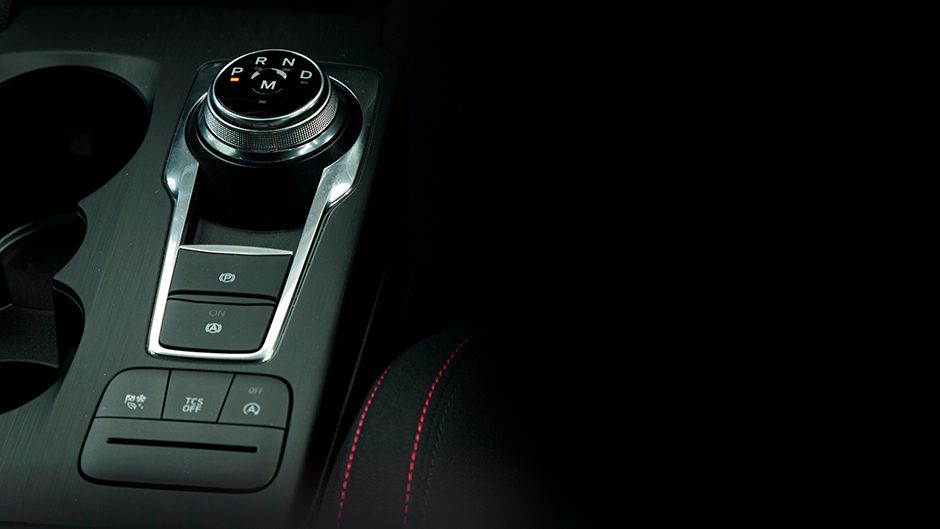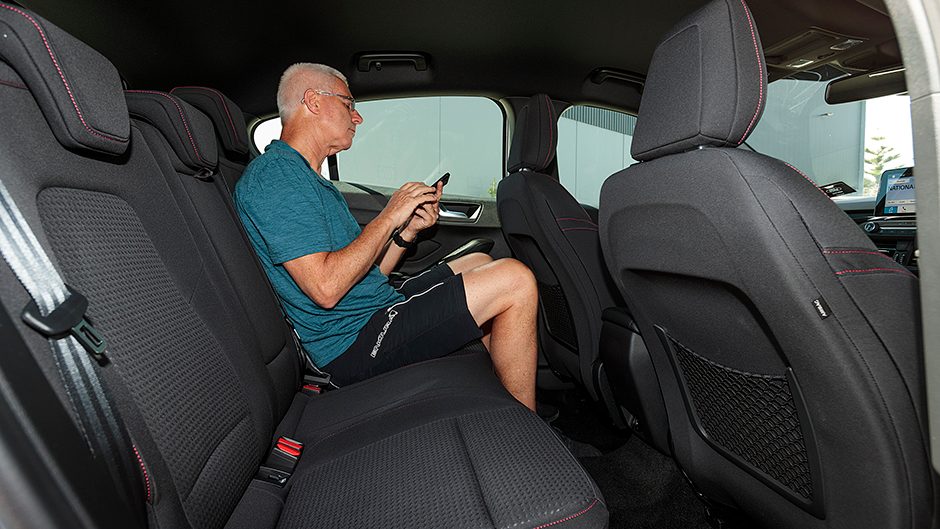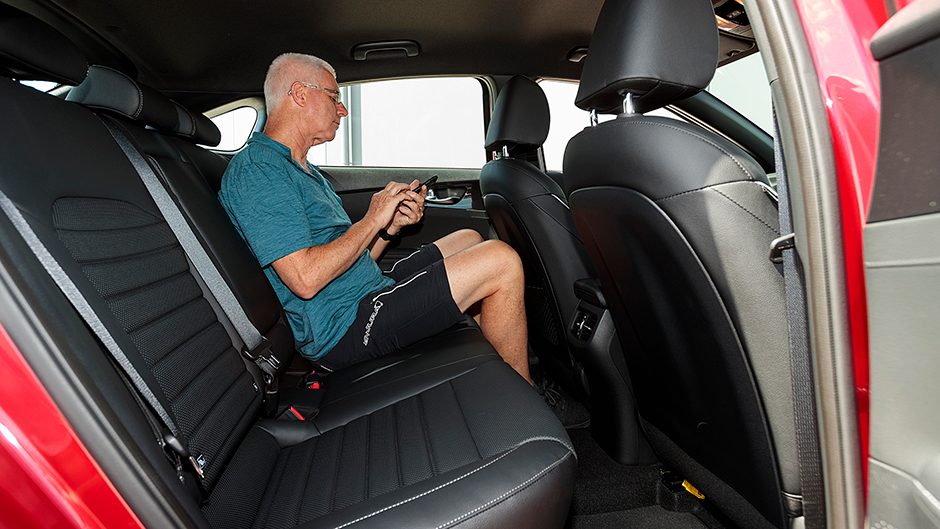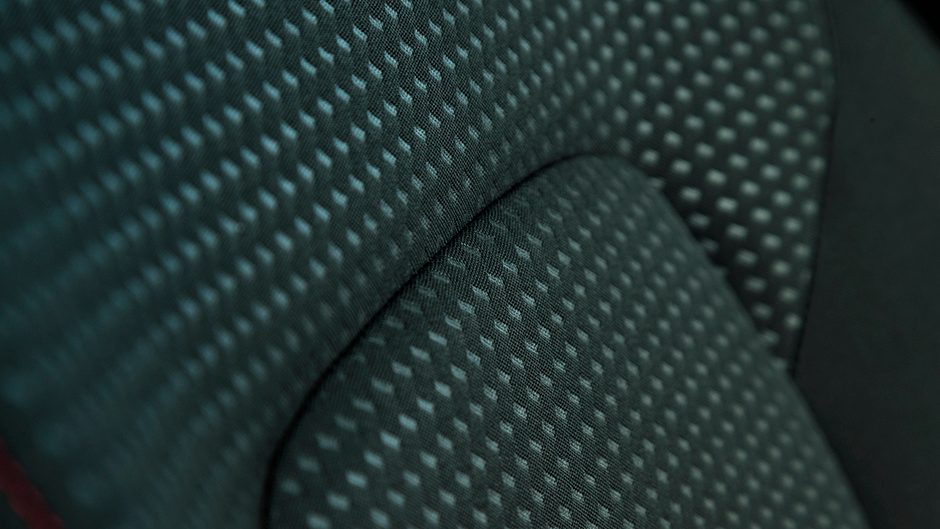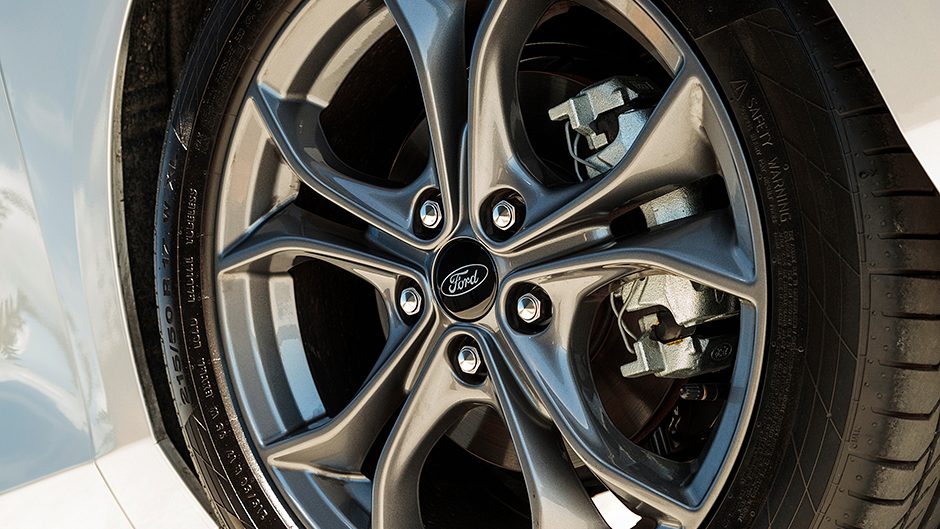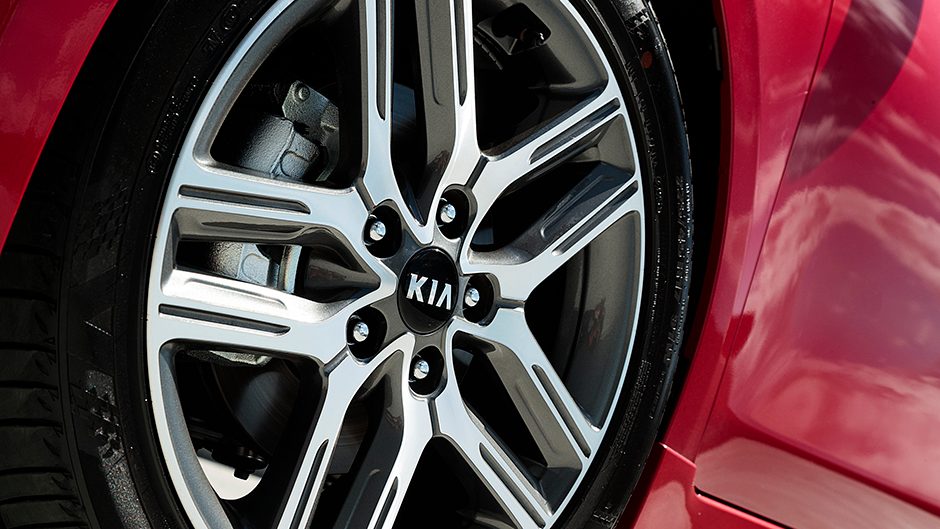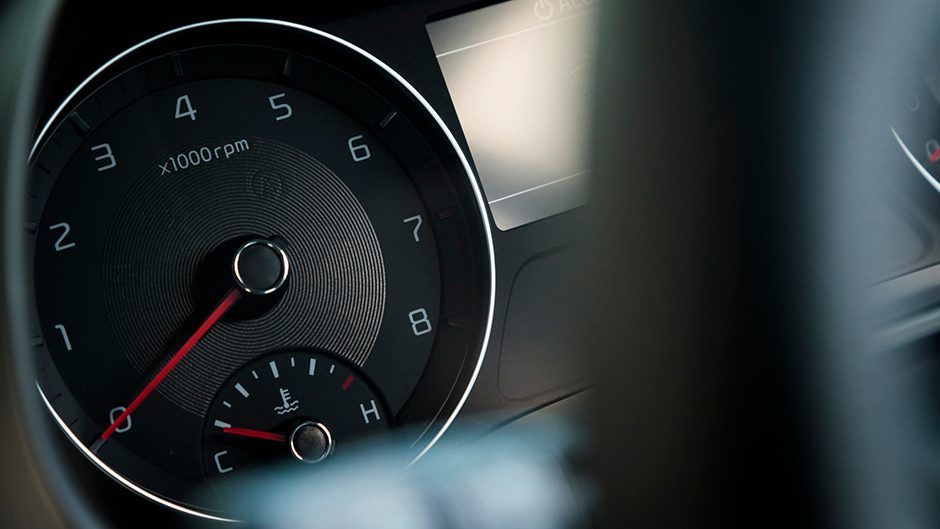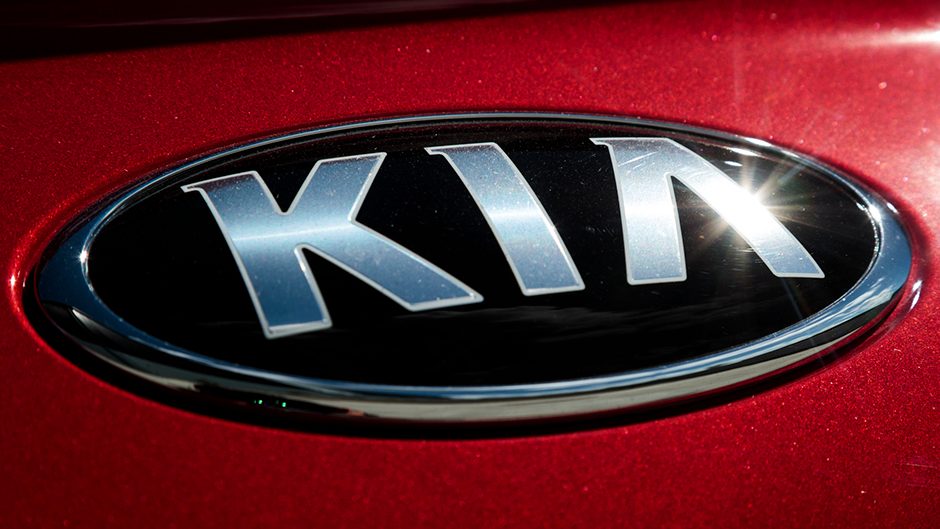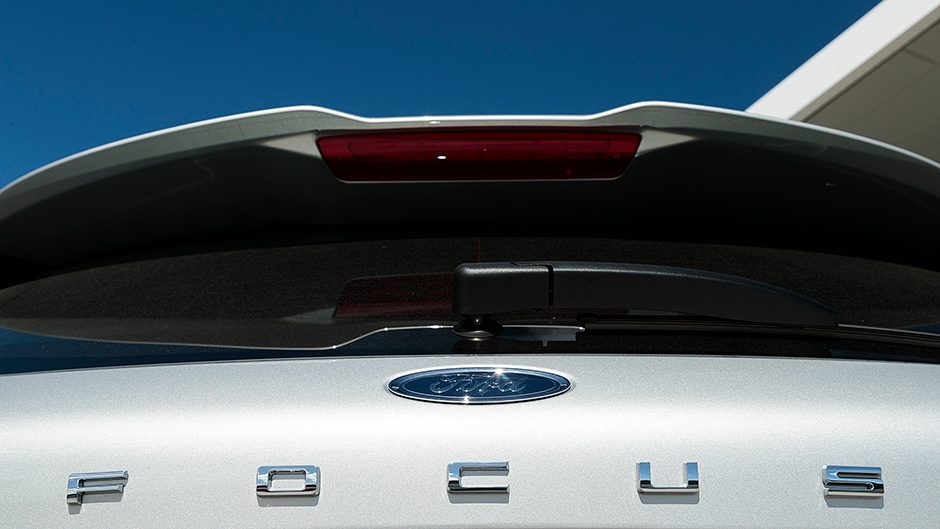2019 Ford Focus vs Kia Cerato comparison
Words Peter Louisson | Photos Tom Gasnier
The new Focus and Cerato ranges each feature a sporty model dubbed ST-Line for the ford and GT-Line for the Kia. They’re priced the same so how do they stack up?
Kia announced its fourth-gen Cerato sedan and hatch line-up recently, the base LX model expected to be the strongest seller by far, appealing to the business buyer at $31,990. Further up, the penultimate offering is the GT-Line with a 2.0-litre four costing $39,900. However, Kia has recently announced pricing of $36,990 for this model and rather than being promotional and temporary, it seems as if this will be the long term sticker price for the model. That puts it on a par with the intermediate model in the Focus line-up, the also go-get-’em ST-Line.
Both have a sports orientation but it’s the Focus ST-Line that gets more output, via a smaller turbocharged engine, whereas the Cerato is better specified. So how exactly do these two like-priced compact hatches compare?
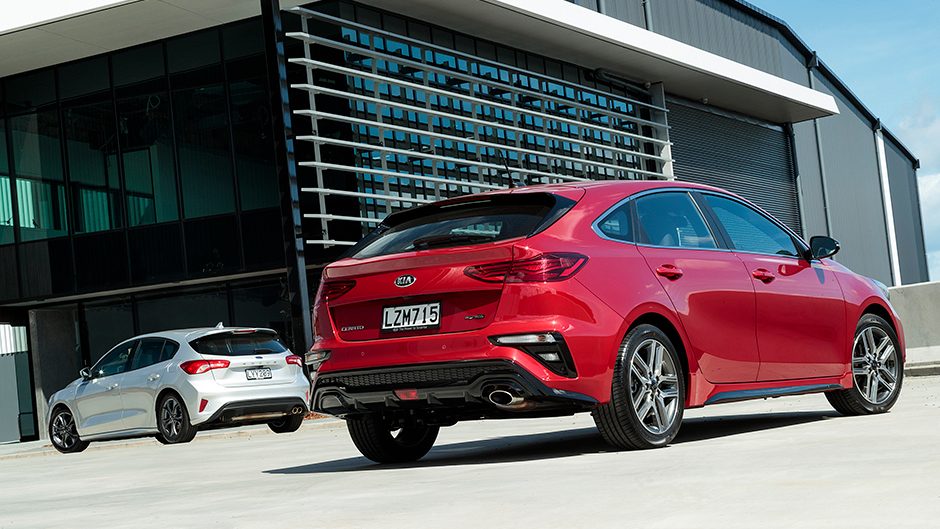
Oily bits differ
These two are essentially sporty dress ups; the GT-Line gets the same spec as the GT, only without that car’s ripper 1.6-litre turbopetrol. Instead it uses a 2.0-litre atmo that spits out 112kW and 192Nm, the latter at 4000rpm. The engine is mated to a six-speed automatic. All well and dandy for the modern era you’d think? Er things are changing. Increasingly compact cars come with a turbocharged engine, and a seven-speed box of some description. Sometimes more. Even some entry-level models come with a turbocharged engine.
So volume movers like Corolla and Mazda3 retain natural aspiration but everything from VW, along with sundry Skodas and Seats, is motivated by turbo power. Lancer and Pulsar, both with atmo engines, are no longer and so too Cruze, which moved mainly to turbo power before self-immolating. Replacement, Astra, uses turbos exclusively. The Focus ST-Line is currently the midspec Focus, and it gets a new 1.5 turbocharged triple, pumping out 134kW and 240Nm, the torque fully fledged by 1600rpm.
A cute trick is that on low loads it cuts out one pot, and becomes a parallel twin to save on fuel. So three into two does go. Next year Ford will introduce a 48v mild hybrid system with a 1.0L triple and belt-driven integrated starter/generator. A combined fuel figure of 4.7L/100km is promised. Ford has also made an effort to cut back on overall weight for the new Focus, so it scales up at just under 1350kg fully fueled. On average it’s 50kg lighter, thanks to a new 20 per cent more rigid C2 platform and when you drive the pair, it feels to be carrying less weight.
However, that’s just an impression for Cerato weighs the same as Focus. Regardless, power to weight favours the Ford at 10.0 vs 12.5kg/kW. Furthermore, the Ford processes the output from its wee triple through an eight-speed automatic that comes standard with shift paddles. The Kia’s six speeder you can shift manually at the lever only.
Combined fuel figures favour the smaller triple with the blower comfortably, at 5.9 vs 7.4L/100km. Put another way, that’s 132g/km of CO2 vs 167g/km for the Kia. Likely the taller gearing contributes. The Ford’s Cd is a claimed 0.27, but that is matched exactly by the Cerato hatch.
Features, features
What about the specification front? It’s hard to better the Koreans generally. Both run on 17-inch alloys, with almost the same rubber sizes too though the Ford gets proper sport rubber. Each comes with dual zone air con, a five-star ANCAP rating, active cruise (with stop and go for the Ford only), lane keeping, forward collision warning and autonomous braking with pedestrian and cyclist detection.
They also share smart keys, sat nav, a touch screen, and are compatible with both types of smartphone. Special features of the Kia include a Qi phone charger, LED headlamps, fully powered seats (heated and vented, retracting for ease of egress) and parking sensors front and rear. Upholstery in the Kia is “composite leather” meaning not from a cow, while the Ford gets cloth trim. The Focus comes with a more conventional phone charger (it gets USB outlets), halogen lights, fully manual seat adjustment and parking sensors at the rear only. Both come with Isofix fittings, and various Drive modes.
Only the Ford gets ambient LED lighting inside, post-impact braking, MyKey cover for teenage drivers, a rotary gear selector (e-shifter), an active grille shutter, sports exhaust, capless refueling and torque vectoring by brake. Both machines have twist or torsion beam rear ends. That also means they’re both quite roomy in the luggage area, with Ford claiming the higher ground of 443 (to 1320L folded) vs 428L-1335L.
However, Kia staff suggest the Ford figure is to the roofline, whereas the Kia’s is to the windowline. In which case you’re looking at 375L for the Focus. The Kia sacrifices a little space with the fitment of a full size spare, the Ford with a temporary jobbie. As to size, only Cerato has grown significantly.
Although Cerato’s wheelbase is unchanged at 2700mm, coincidentally the same as Focus (up 52mm), overall it is 160mm longer at 4510mm, while width (1800mm) and height (1445mm) are only slightly up. By contrast the Ford’s figures are 4378, 1825 and 1452mm, little changed. Not much in it then but the Focus seems a bit more hunkered down.
Both have decent legroom in the rear for a humble hatch and good entry too. On first impression, both of these look pretty sharp, the Cerato almost a cross between an estate and a liftback in profile. There are also sedan variants available if you need more boot space (just over 500L) while Ford offers an estate as an alternative to the hatch. It’s a diesel-only model, costs $37,990 and is powered by a 2.0L oiler making 370Nm and using 4.4L/100km overall. Luggage space is a claimed 728-1620L, presumably to the roofline.
Its hatch stablemate looks even more aggressive than the Cerato and sounds it too with its sports exhaust. Both feature great all-round visibility from the driver’s seat. And both step up markedly for interior ambience.
Turbo trumps
For sheer go-power an atmo engine will always struggle against something with forced induction and that’s the case here. The Ford manages to slip under the 8sec mark for its best 0-100 whereas the Cerato struggles to better 9.5sec.
Things are closer for the overtake, with just a half second in it. That’s because the Cerato did it all in one gear. There were a couple of metres in it for the emergency stop, comfortably going the Ford’s way with its sportier rubber. All this is by the clock, but for day to day running they’re closer than you might think. The Focus eclipses the Cerato on account of how its maximum torque is delivered from 1600rpm onwards but the Kia hauls quite well from lowish revs too. However, above midrevs, the motor is rowdier. By contrast, the small triple in the Focus you can hardly hear.
Even in Normal mode, the Ford’s default, it hauls effortlessly about the suburbs, slurring between gears, and at 100km/h can sip away in the low fours, according to the instantaneous readout. A worst figure of just under 10L/100km compares with something a bit over 12L/100km for the Cerato, though it averaged 9.2 for our time, while the Focus was on 8.2 thanks to an accumulation of more motorway miles. Those figures, however, were off the computer so are only an indication.
You’d not really ever need the Sport mode in town for the Focus, but out where roads are emptier it puts a bit of a spring in its step. If you weren’t inquisitive you might think Cerato has no Sport mode but it does, activated by shifting the lever to the manual sequential slot whereupon it perks up. Both have adaptive transmissions. Paddles are seldom needed in the Ford, only on occasion for hooking top gear.
In the hills the auto of the Cerato has a tendency to hunt between cogs. In the Ford, even in seventh the engine is barely more than ticking over at 100km/h. In eighth, you’re looking at 1600rpm, where the motor is turning 2000rpm in the Kia. By far the most dominant noise in the cabin is from the Ford’s ContiSport tyres rolling over our cheap chip seal, with an average of around the 74dB mark. The tyres on the Cerato are quieter, closer to 72.5dB.
A reference grade chassis
Ford has outdone itself this time round with the Focus, despite reverting from a fully independent rear suspension set-up to a twist beam. Where the Cerato doesn’t exactly excite at the wheel, the Focus is an inspirational drive; it entertains whereas the Kia merely delivers.
Through corners, the Cerato’s lesser rubber starts to squeal in protest as it heads into predictable understeer, all the while the steering a bit heavy. The Focus is more accurate. You can push harder and harder until the torque vectoring by brake intervenes. At this point you’re going pretty much hell for leather.
There’s a hunkered down feeling to the Focus that’s absent in the Cerato, and eventually it’s the rear end that gives up the ghost, not the front which responds beautifully to lift off, tucking tighter, whereas the Cerato merely shrugs its indifference. The steering in the Focus is lighter, tastier, without the usual electric feel of artificial weighting.
They’re about line-ball on the ride front, only the Cerato is a bit quieter over the loudest chipseal. Neither is quite cushy. So not only is the powertrain more up for it but so too the chassis of the Ford. It has the Cerato beat on both counts. It looks sportier too. Cerato fights back on the spec front though. For the money, it is very well fitted out.
To do a decent premium compact is commonplace but to achieve a great result on a family budget is vastly tougher. Fourth-gen Focus is one of those rare class acts. Expect the Active crossover variant later this year.
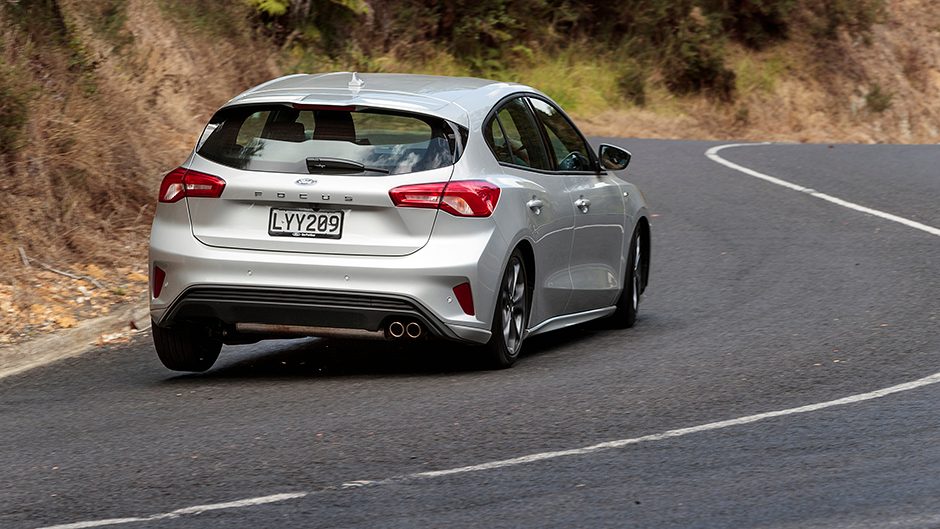
| Model | Ford Focus ST-Line | Price | $36,990 |
| Engine | 1496cc, IL3, T/DI, 134kW/240Nm | Drivetrain | 8-speed auto, front-wheel drive |
| Fuel Use | 5.9L/100km | C02 Output | 132g/km |
| 0-100km/h | 7.99sec | Weight | 1347kg |
| Model | Kia Cerato GT-Line | Price | $36,990 |
| Engine | 1999cc, IL4, EFI, 112kW/192Nm | Drivetrain | 6-speed auto, front-wheel drive |
| Fuel Use | 7.4L/100km | C02 Output | 167g/km |
| 0-100km/h | 9.79sec | Weight | 1352kg |


